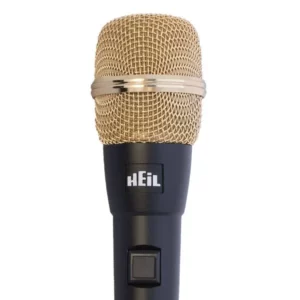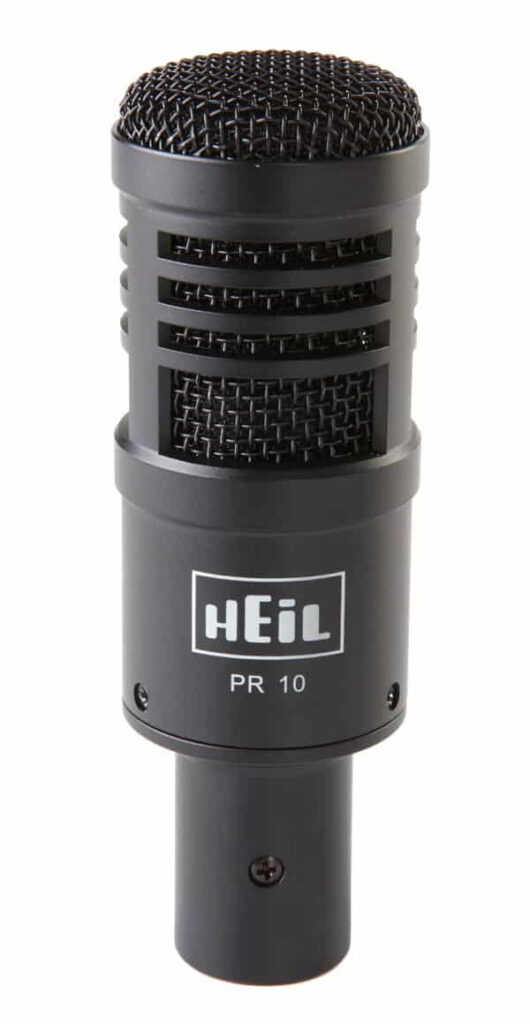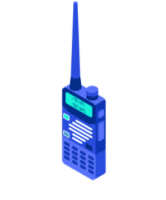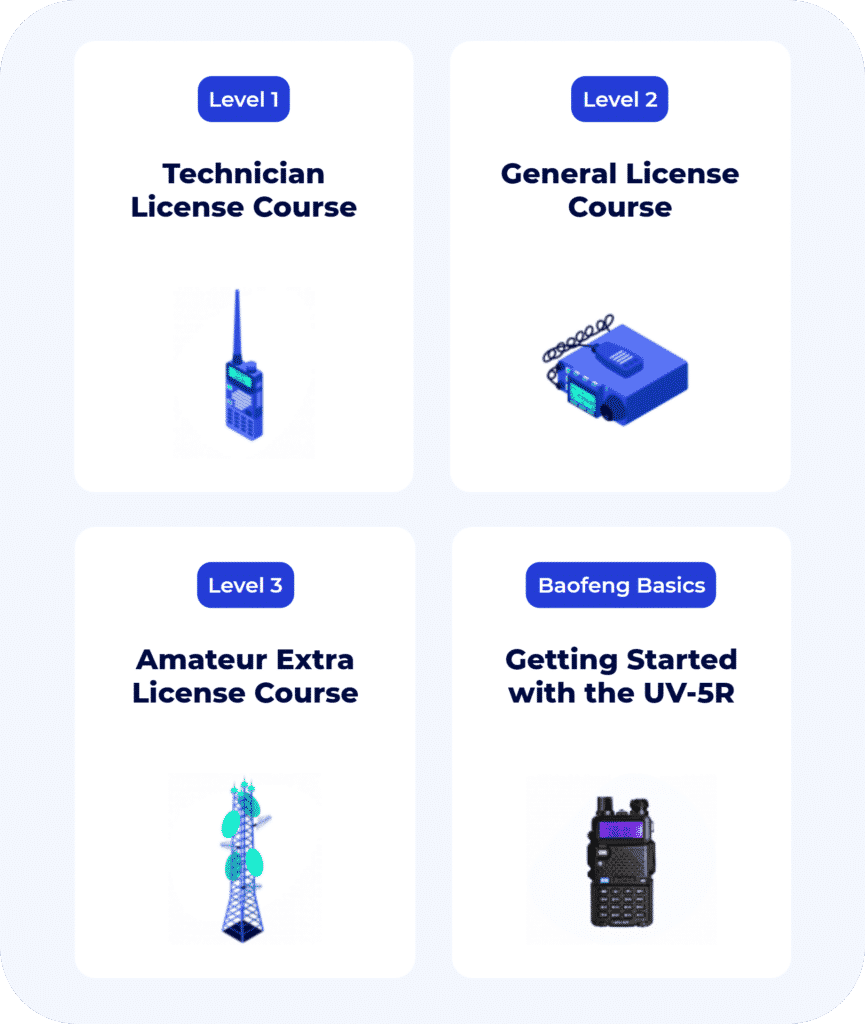Upgrading your microphone is a great way to improve your operation without breaking the bank! Here is a list of the best ham radio microphones for your HF station.
In this guide, Professor Jim N4BFR will teach you how to pick the right microphone and upgrade your shack.
There’s a quote from a famous ham radio audio engineer about microphones I like. Let me paraphrase. “The color is the only thing that matches the stock mic to the radio it comes with.”
Let’s take a look at adding a new microphone to your shack.
Choosing the Right Microphone
We’re going to start by upgrading the mic for the ICOM IC-7300 we used in our HF Masterclass. Once we do that, we’ll cover some other options you have to interface a mic to your ham radio.
By the way, none of our recommendations in this guide are sponsored. We’re just showing what we like and use.
Most modern HF radios from Flex, Kenwood, Yaesu or Elecraft can take a “standard” dynamic microphone. There are a lot of options in that universe, and we’ll show you some of those in a few minutes.
If you do decide to go with a mic that doesn’t come from your radio manufacturer, we’re going to point you to the folks at Heil Ham Radio. They have a nice finder tool as well as charts to help you pair up the right mic and adapter with your radio.
Best Ham Radio Microphones: Expert Recommendations
As we mentioned earlier, a dynamic microphone works on many other brands of radio. We tried them on Yaesu, Flex and Elecraft just to name a few.
Let’s look at a few, starting with some of the options.
1. Heil “iCM” mic

In choosing a mic for our ICOM radio, we needed one with a condenser element. The radio does not handle the input from a dynamic microphone well.
We went with the Heil “iCM” mic from Heil Ham Radio. You can buy directly from Heil or from other ham stores. We picked ours up at Gigaparts.
2. Astatic D-104

If you are longing for the CB days, you might want to find an Astatic D-104. This is the basic model that I found for $40 at a hamfest. Now, you will need to do some wiring to make it ready for your rig. But, doesn’t it bring back some memories of listening to Bandit and Snow Man, if you are of a certain age.
3. Shure 55SH

Most classic mics and podcast mics like this Shure 55SH usually have a 3-pin or 4-pin connection called an XLR. A mic with a 4-pin XLR will typically have a push to talk somewhere on the mic or base.
Once you can get the audio out via XLR, you’ll need to look at your radio to see what the input style is. For instance on a Flex you can use an 8-pin style connection on the front, or an XLR connector on the back.
On a Yaesu radio, many of the modern ones use a jack that is shaped like an Ethernet Cable called RJ45. Kenwood and Elecraft use a different 8 Pin adapter.
4. Kenwood MC-90

Again, if you are brand loyal, Kenwood and Yaesu both have options in their respective groups. If you can find the Kenwood MC-90 you will pay around $325.
5. Yaesu’s M-90D

Yaesu’s M-90D mic looks nice on a desk and comes in around $200. A positive is that they come with connectors that fit your radio, but a downside we see is that they are not designed to be mounted on a boom stand.
Extra Important Gear to Pick Up
Good news for us is that because it’s radio specific, the iCM comes with an 8-foot cable attached. That cable interfaces right to the front port on the radio. It also has a “Push to Talk” button right on the body.
We’re going for maximum hands-free flexibility when we are operating. That allows us to type in our World Radio League logbook or look up DX spots while we operate. So we’ll add two more pieces of gear to our shopping list.
Foot Pedal for Push-to-Talk
We like to have a foot pedal for a push-to-talk switch. We picked up the Heil version, but there are others around. I have 2 radios at home, so I use an old dictaphone style foot pedal with two buttons. If you don’t want to add wires, you could also use the VOX function of your radio.
Desktop Mic Stand
Finally, we like lots of clear desktop space, but we’re not ready to permanently attach anything to our desk. So instead of a broadcast-style boom for our mic, we picked up a desktop mic stand. It’s designed to sit on the corner of the desk.
Budget for the Heil Mic and foot pedal at Gigaparts and the stand on Amazon came in at less than $185. Let’s go ahead and set everything up.
How to Setup Your Ham Radio Microphone
Step 1
Power down your current radio and disconnect the mic. Put it away in case you want to take your radio on the road for portable activation. It could live in your go-bag now.
Step 2
Set up the mic stand first. It comes in a few parts that generally screw together. Don’t put the clip that holds the mic on yet.
Step 3
Let’s get the microphone out. It comes with a clip that should fit on the mic stand, or you can use the one that comes with the stand. Either way when you mount the mic you want to make sure the PTT button is not accidentally depressed in the clip.
I like to use wire ties or velcro to attach the mic cable to the stand. That keeps it up and out of the way, again trying to achieve maximum desk space.
Step 4
Attach the mic cable to the radio. It should only go in 1 way. Screw it down just finger tight so it doesn’t accidentally get pulled out when you are operating. We also need to attach the foot pedal and that’s straightforward. Find a spot under the desk that’s comfortable for placement. Then run the cable back up and plug it in to the ¼ inch jack on the ICOM cable.
Step 5
You should be ready to go. On our ICOM we can use the Voice TX Recorder under “Menu – Voice” to record a clip and see how we sound. Adjust the mic gain if you want louder or softer.
If you don’t have that option, try testing with a WebSDR to listen to yourself over the air. We go through that process in the HF Master Class.
Before we go on to other radio brands, two more things about ICOM. First, this setup should work with many modern ICOM HF radios. We’ve used it on an ICOM IC-9700 system as well. That’s a deluxe desktop radio for VHF/UHF operating, including satellites. You can even use it with a mobile radio like the ID-5100 DStar radio if you have the right adapters.
Second, is that if you are a brand loyalist, ICOM does have two optional desktop mice you can use. The SM-30 and SM-50 are compatible and have a PTT button on the base. You’ll have to do extra work to add a foot pedal via the accessory port if you find that feature helpful. An SM-30 is just a little less than our setup here, at $170 on Gigaparts.
Interested in handheld ham radios? Check out our guide on the best handheld radios!
More Microphones to Choose From
At the beginning of the video we paraphrase this quote, “The color is the only thing that matches the stock mic to the radio it comes with.” That came from Bob Heil, K9EID.
Now just to reinforce, we promise this is not a Heil ad. However, when you have an expert in concert sound that used to do touring sound systems for folks like Joe Walsh, it’s hard not to listen. By the way, Bob also invented Peter Frampton’s Talk Box and has exhibited at the Rock and Roll Hall of Fame. So we are lucky to have an expert interested in ham radio sound.
If you prefer Shure, AKG or something more exotic, give them a try. Just remember that unless you are using an ICOM rig, you want a ”dynamic” microphone.
All that said, here are a few more mics we like:
1. Heil PR-10

The Heil PR-10 is a nice mic with really great sound, and it comes in at less than $200. I’ve used this for some podcasting. It comes with a stand and a push to talk button, so you just need to add the proper cabling. If you want to go top of the line, the Heil PR-40 is your best choice. This will run you just under $400 for a new microphone, before any other accessories.
2. PR-77D

Indulge me with two more fun options. The PR-77D is a retro option that is adjustable for music or voice settings. It looks classic and it comes in purple or black. The stand is extra.
3. Shure MV7X

The Shure MV7X seems to be another great option for a shack, with a price point below $200. Designed for voice response, it will mount on a boom or a desktop stand and has an XLR output. We haven’t tested it, so if you do pick one up let us know how it works. We like that Shure’s support site is active with discussions on connecting other versions of their mics to ham radios.
4. Heil Classic 5

Finally, this one was a bit of a holy grail for me. I love the look of ribbon microphones so I found this discontinued Heil Classic 5. To me, it looks like the microphone some crooner would use while broadcasting on the NBC Red Network back in the 1930’s. I found it used and was able to customize my call with a 3D printer and some silver paint. A fun project for sure.
Wrapping Up
There are good reasons to get away from the stock mic on your radio. Maybe you want to go hands-free, or just want to add some flair.
Here are the 4 things to remember:
- Match your mic to your radio. Icom uses special mics with condenser elements while many others use dynamic mics.
- Get your cabling together, including an adapter if needed.
- Buy or make a foot pedal or some other push to talk device, or just use VOX if you want to do it all with your voice.
- Think about how you want to use your desktop space when it comes to stands. If you want something close up, you can find some nice ones with integrated push to talk buttons. You can also mount a boom to your desk and be able to push it away when not in use.
We’re with Bob Heil, you can do better than the stock microphone that comes with your radio. Take a look around at the options and find something that fits your style, shack, and budget.
Finally, it’s the time of year when people ask about gift lists. Someone might enjoy getting you something flashy for your shack! Feel free to forward this guide with our suggestions.
From all of us here at Ham Radio Prep, 73 and we hope to hear you on the air soon.











